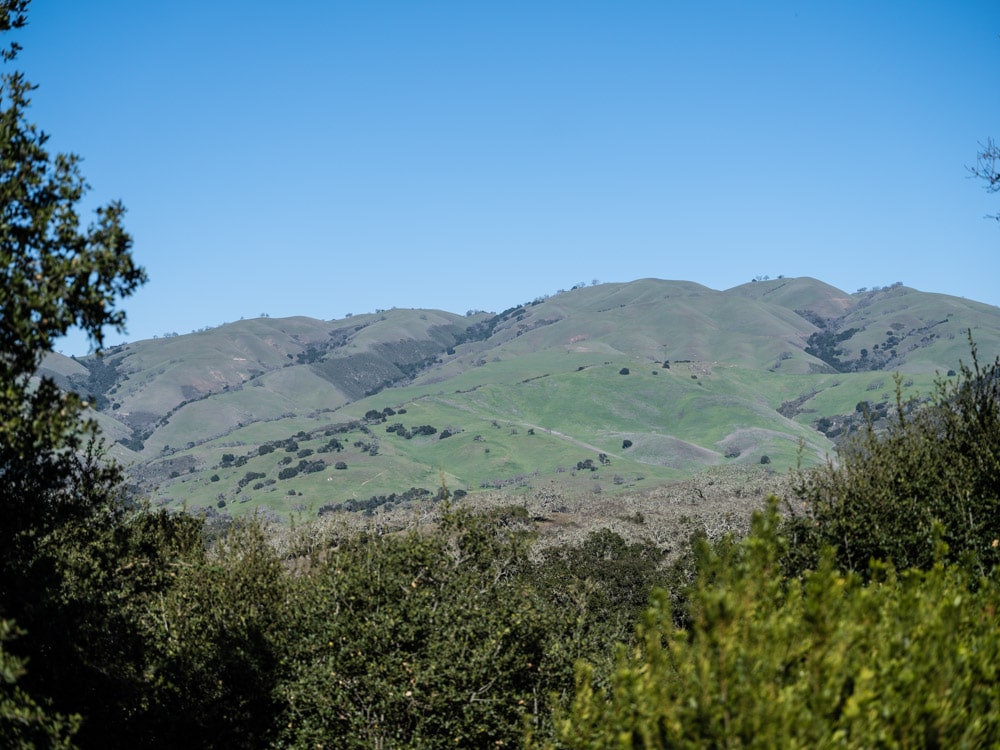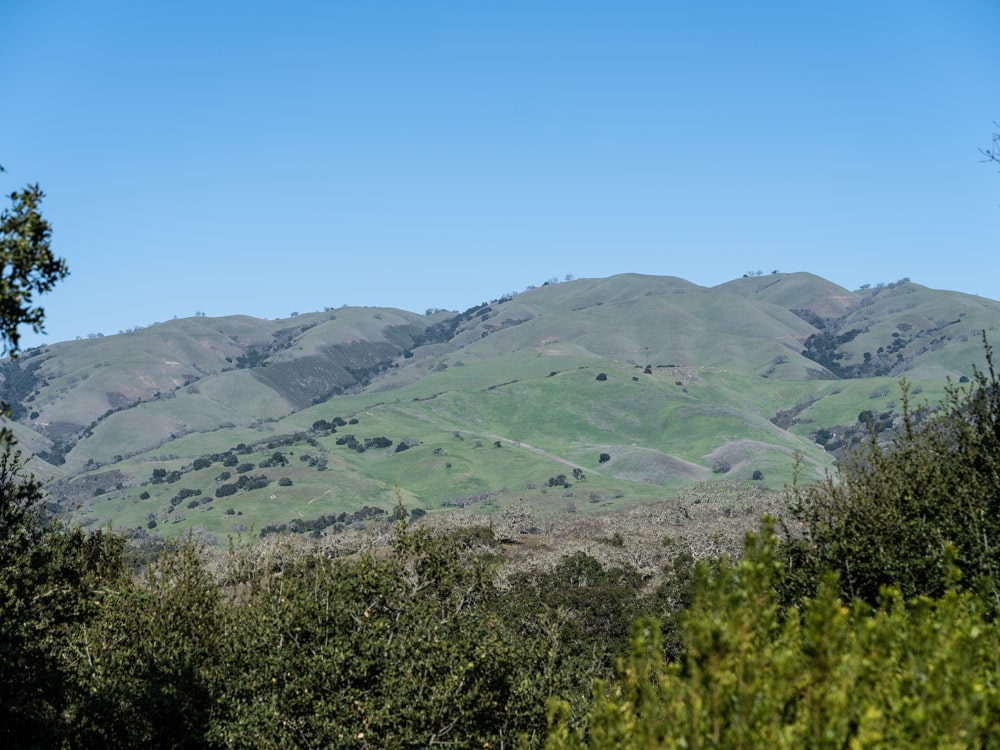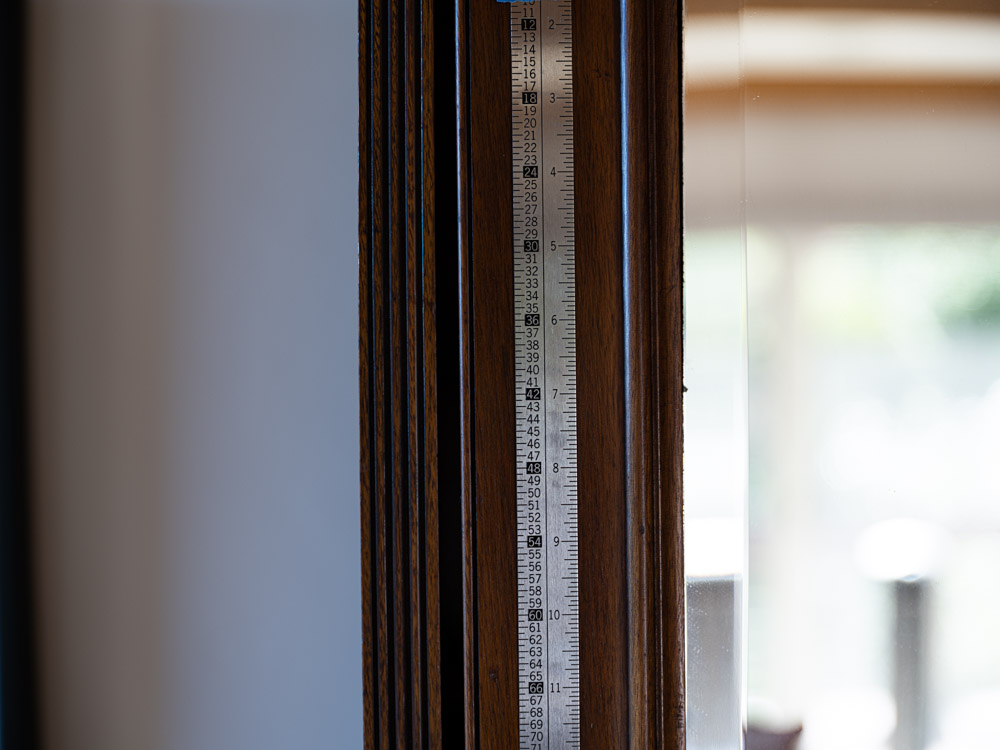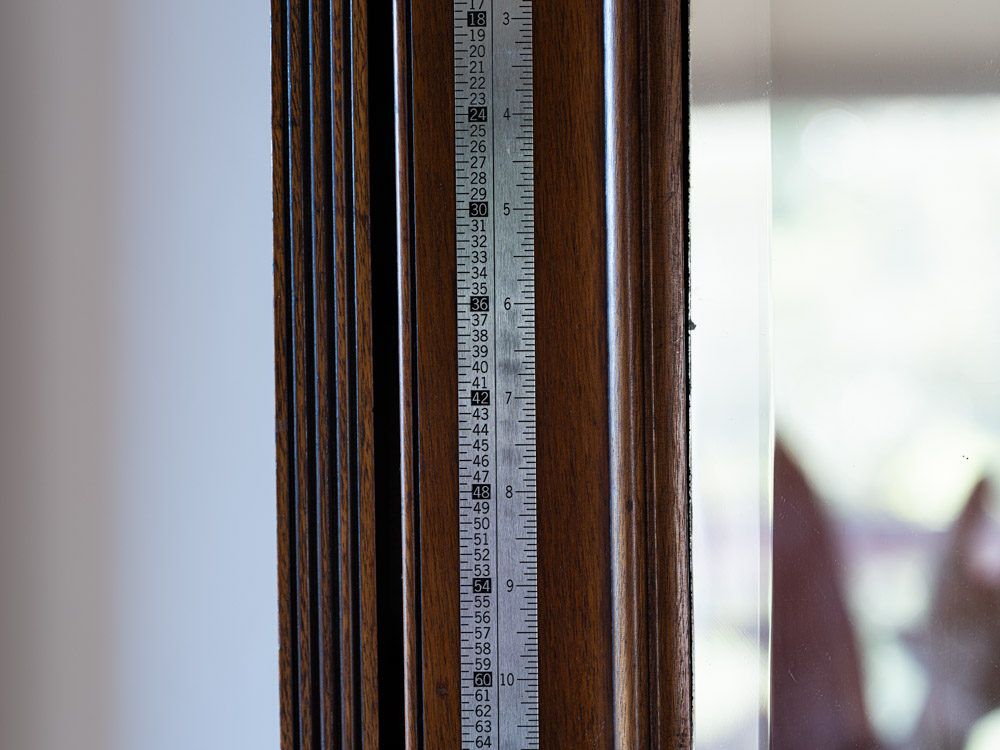In the previous test, I was surprised to find that the focal length of the Fujifilm 45-100 mm f/4 at close range seemed to be more than 10% shorter than the Fuji 110 mm f/2. It could be that the marked focal lengths weren’t accurate on one or both of the lenses. Or it could be that the focal length changes with distance faster for the 45-100 than for the 110/2.
I set the 45-100 to 100 mm and took an image of a three-mile-distant ridge:

Then I did the same with the 110/2

I stacked the images as Photoshop layers, and, using the ruler, I measured the distance between two trees about two thirds of the image width apart. I got 24.676 inches for the 45-100, and 27.49 for the 110. That’s a ratio of 1.11, which is very close to the nominal 1.1.
All lenses — at least all that I know of — that rely entirely on internal focusing, and quite a few that don’t, focus by shortening the focal length of the lens as you focus closer. So you’d expect that a 100 mm lens isn’t 100 mm at three feet. But some lenses change focal lengths more than others. Determining the focal length of a lens when it is close focusing can be quite involved. The thin lens equations don’t work well there. So I did something quick and dirty. I took a picture of a ruler with the 45-100 with the sensor 32 inches from it:

Then I changed the distance to 35.2 inches (32*1.1), and reshot with the 110/2:

The field of view should be about the same. It isn’t; the 45-100 has a much wider field than you’d expect. In fact, if we use the 110 as a reference (setting aside the fact that its focal length is shorter than 110 mm focused that close), the 45-100’s focal length is a bit less than 80 mm.
If you were planning on using the 45-100 for portraiture, you may want to take this into account.
You estimated that due to focus breathing, the zoom lens offers only about 80mm focal length when focused close.
Roughly, what would you estimate the effective focal length to be when doing half-length portraits, and also when doing full-length portraits?
Wow, Jim. Enough focus breathing to — in my opinion — make the lens unsuitable for what I thought would be its ideal niche, wide enough for environmental portraits but long enough for tighter ones. But as you noticed and then followed up with tests (three cheers for your observations and tests!), at closer distances its actual focal length decreases way beyond its nominal one. If about 80mm, that’s actually only about 65mm FF-equivalent (figured on the long dimension). And as you said, that calculation is based on comparison to the 110mm prime, which is itself likely to be shorter than its nominal F.L. at close focus. Based on experience (that goes all the way back to unit-focusing Super-Takumar primes on Spotmatics), I still prefer about 85mm (a true 85mm) FF-equivalent for head and shoulders portraits. I’m sure this lens will find its uses, and good to know it performs well, just disappointing to see its focal length so much less at close distances.
I still would like to see some manufacturer produce a top-quality zoom, without too much focus breathing, that goes from about 30/35 to 85/90mm, preferably f/2.8, for Sony full-frame mirrorless.
Off-topic, but since you previously mentioned your interest in the 110mm Apo-Lanthar, you might find this interesting:
1X HIGH-END LENS TEST.
https://www.closeuphotography.com/1x-test-2020/
I suppose you could measure angle of view vs. focus distance directly by shooting a scene with two point light sources using different focus distances. When out of focus, the light sources will show up as blobs rather than points. I’m assuming that if you stop down, the blobs will be roughly circular and you can get a good measure of angle of view by measuring the distance between the centers of the blobs. Changing the focus could move the lens closer or further away from the light sources, so the light sources would have to be far enough away that this change was too small to matter.
> “The thin lens equations don’t work well there. … with the sensor 32 inches from it.”
Without the thin lens approximation, measuring the distance from the sensor makes IMO very little sense. This ignores the distance between two principal planes!
Well, I have very little clue how to take this distance into account…. So why not measure changes of angle-of-view instead?
Image two point sources far away twice: once focusing at ∞, once with close focus. Compare distances between centers of bokeh disks. Why would not this work?